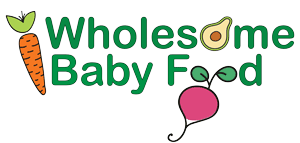 How-To Advice for Feeding Babies Constantly Changes
How-To Advice for Feeding Babies Constantly Changes
Throughout the generations, advice on feeding babies has continually changed. Much of the advice from past generations ranged from the practical, to the professional to the just plain odd.
Feeding Babies – Feeding Myths:
- Nitrates in homemade carrots (and other vegetables containing nitrates) are dangerous; commercial baby food is free from nitrates.
- Baby food must be bland
- Green vegetables before orange and never offer fruits before vegetables – ever.
- Adding cereal to baby’s bottle will help him sleep through the night
- Babies should not eat dairy like yogurt and/or cheese until 12 months or older
Feeding Babies – Curiosities:
Babies do not need teeth to chew textured or chunky foods
When it comes time for baby to move onto chunkier foods or table foods, many parents are a bit hesitant due in part to the fact that their babies might not have any teeth. It’s a common misconception that babies should not start to eat finger foods until they get their teeth. This is logical because after all, we use our teeth to chew foods of harder and chunkier textures. We seldom ever use our front teeth to actually chew the foods we eat. It is the molars, the big teeth in the back of our mouths, that we actually use to chew our foods with.
Now that you’re reading this and thinking about it, you knew that already. Babies won’t get their molars until sometime between the 13-19 month age ranges; that’s quite a long time! Despite the lack of molars, babies have very strong and tough gums that are capable of mashing and grinding soft cooked foods of almost any texture, with relative ease. If you’re unsure about how capable baby’s gums are, just ask the nursing Mom how it feels when baby clamps down.
Try this to test if the food is mashable: place a piece of any food that you want to offer your baby between your thumb and pointer finger and gently squeeze it. If you can mash the food between your thumb and finger, then your baby’s gums can certainly mash that same food. Another thing you might want to do is put the food in your mouth and swirl it around and push it against your cheek with your tongue; if the food is easily mashed, then your baby can surely handle it.
Babies will turn orange if they are fed an abundance of orange foods
? Read more about Orange Babies here ?
One day while you are gazing lovingly upon the beautiful child you created you feel like something is amiss. Suddenly it dawns on you, your baby’s nose is orange and, as a matter of fact, so are her cheeks and oh my goodness, the palms of her hands are orange too! There’s no need to panic. Your baby may be turning orange due to Carotenemia.
Recipes for Baby Food from the 1800’s

This book from the mid-1800s was written by a woman who became the “Martha Stewart” of her time. The book includes a few recipes for feeding babies, advice on selecting and preparing foods, health tips, cleaning domestic accessories, dealing with hired help, and much more. #affiliantelink
It is always interesting to see how feeding practices have changed over the generations. Some old practices have, thankfully, been abandoned while others have been tweaked and made more healthful thanks to the evolution of the nutritional sciences. Below are two recipes that really illustrate how far science and knowledge have progressed when it comes to feeding babies. The author, Sarah Josepha Hale, was quite a “celebrity chef” back in her days. Two of her recipes are found below:
Food for a Young Infant
- Take of fresh cow’s milk one table-spoons full, and mix with 2 table-spoonsfull of hot water; sweeten with loaf-sugar as much as may be agreeable.
- This quantity if sufficient for once feeding a new-born infant; and the same quantity may be given every 2 or 3 hours — not oftener — till the mother’s breast affords the natural nourishment.
Thickened milk for young infants when 6 months old
- Take 1 pint of milk, 1 pint of water; boil it and add 1 tablespoon of flour.
- Dissolve the flour first in half a teacup of water; it must be strained in gradually and boiled hard for 20 minutes.
- As the child grows older, one-third water.
- If properly made, it is the most nutritious, at the same time the most delicate food that can be given to young infants.
This book also recommends stale bread as a staple in the diet as well as liberal amounts of sugar in fruits and vegetables. I wonder what the author would think of her feeding advice and recipes in this day and age considering the studies and research in nutrition.
6 months is a special age for introducing solid foods to babies
A few “magical” things happen for babies around (4- ) 6 months of age:
- Baby’s intestines should be fully “closed” – it is said that the lining of an infant’s intestines are “open” and porous. Foreign proteins (such as food particles) may be passed through the intestinal wall if it has not matured and is still open.
- Babies are less likely to aspirate foods
- Baby is better able to recognize that she is full and regulate how much she needs to eat
- Baby is able to indicate she is full by turning away from food or firmly closing her mouth as the spoon approaches
- Baby should be have fully developed head control and be able to sit up with minimal assistance
- Baby has had breast milk or formula during the crucial first 6 months of life; giving her the healthiest start with optimal nutrients
